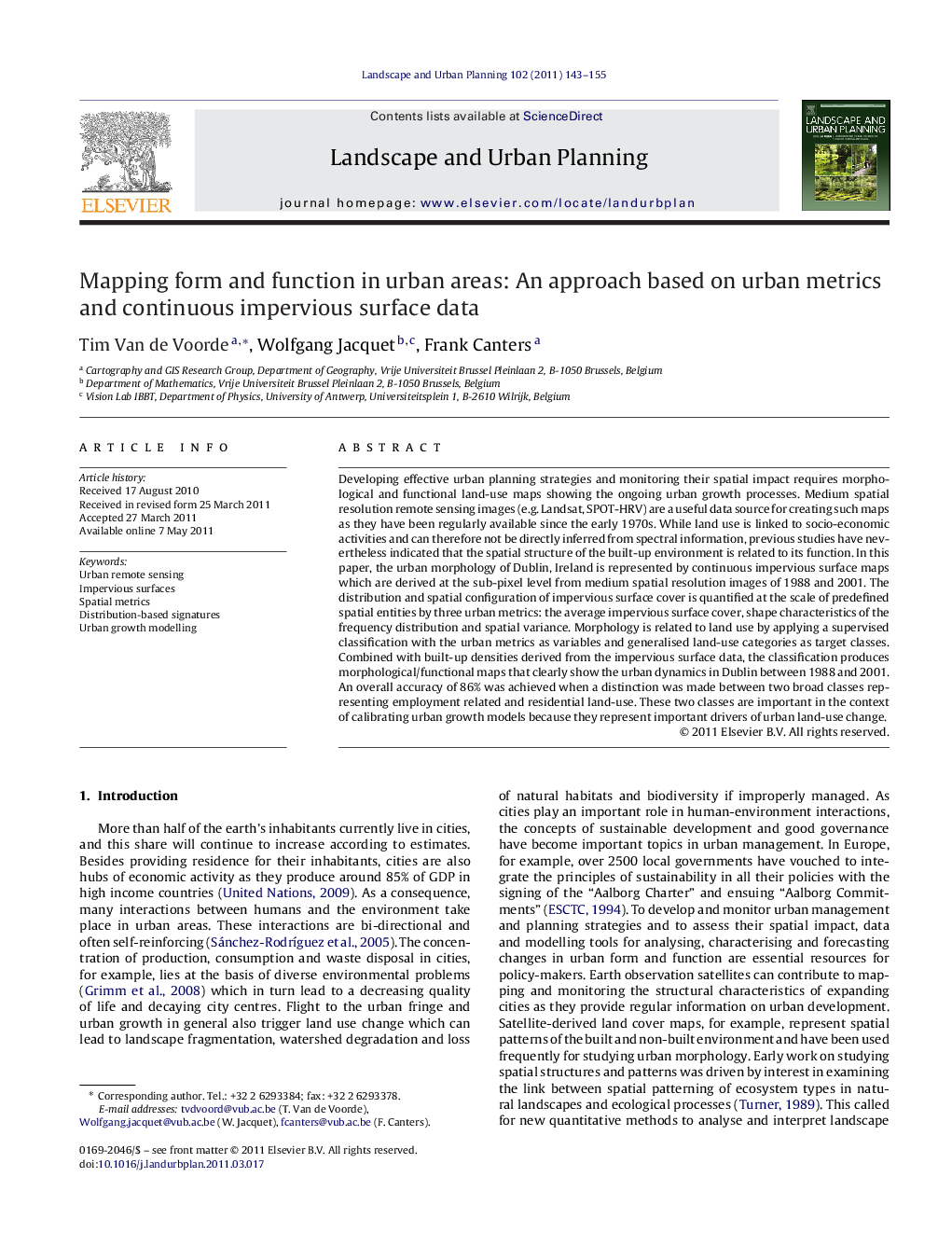| کد مقاله | کد نشریه | سال انتشار | مقاله انگلیسی | نسخه تمام متن |
|---|---|---|---|---|
| 1049682 | 945630 | 2011 | 13 صفحه PDF | دانلود رایگان |

Developing effective urban planning strategies and monitoring their spatial impact requires morphological and functional land-use maps showing the ongoing urban growth processes. Medium spatial resolution remote sensing images (e.g. Landsat, SPOT-HRV) are a useful data source for creating such maps as they have been regularly available since the early 1970s. While land use is linked to socio-economic activities and can therefore not be directly inferred from spectral information, previous studies have nevertheless indicated that the spatial structure of the built-up environment is related to its function. In this paper, the urban morphology of Dublin, Ireland is represented by continuous impervious surface maps which are derived at the sub-pixel level from medium spatial resolution images of 1988 and 2001. The distribution and spatial configuration of impervious surface cover is quantified at the scale of predefined spatial entities by three urban metrics: the average impervious surface cover, shape characteristics of the frequency distribution and spatial variance. Morphology is related to land use by applying a supervised classification with the urban metrics as variables and generalised land-use categories as target classes. Combined with built-up densities derived from the impervious surface data, the classification produces morphological/functional maps that clearly show the urban dynamics in Dublin between 1988 and 2001. An overall accuracy of 86% was achieved when a distinction was made between two broad classes representing employment related and residential land-use. These two classes are important in the context of calibrating urban growth models because they represent important drivers of urban land-use change.
► Spatial variability and shape characteristics of the frequency distribution of fractional sealed surface cover derived from medium resolution satellite imagery are useful metrics for characterising urban morphology within building blocks.
► Urban morphology quantified by the proposed spatial metrics can be used as classification variables to infer a map indicating general land-use classes with an overall accuracy of 86%.
► Maps derived from historical medium resolution satellite images with the proposed approach indicate the expansion and the nature of land use change in the city of Dublin, Ireland between 1988 and 2001.
► Urban growth in the observed period in Dublin mainly consists of low density residential development (urban sprawl) and the expansion of industrial areas.
Journal: Landscape and Urban Planning - Volume 102, Issue 3, 15 September 2011, Pages 143–155